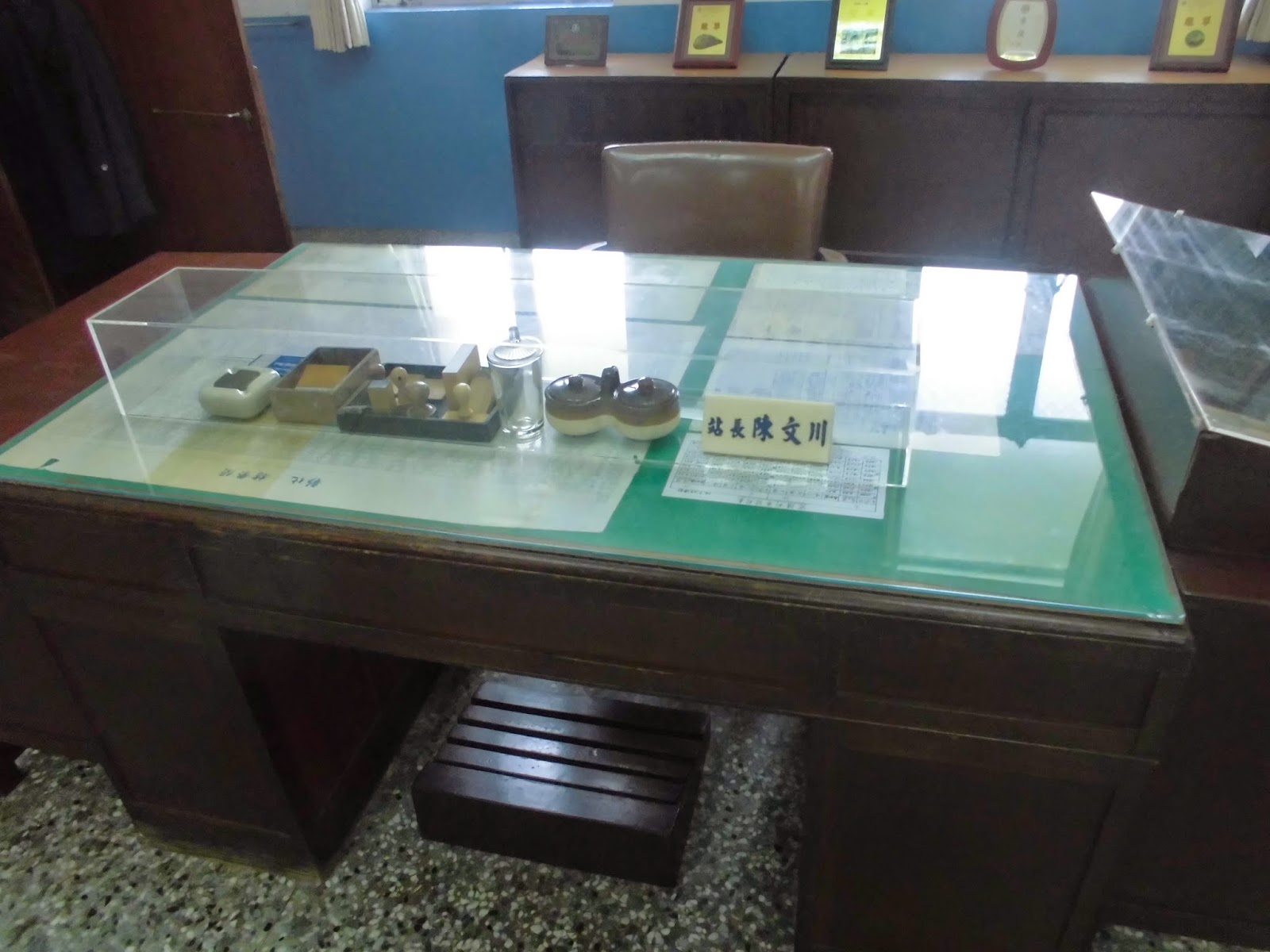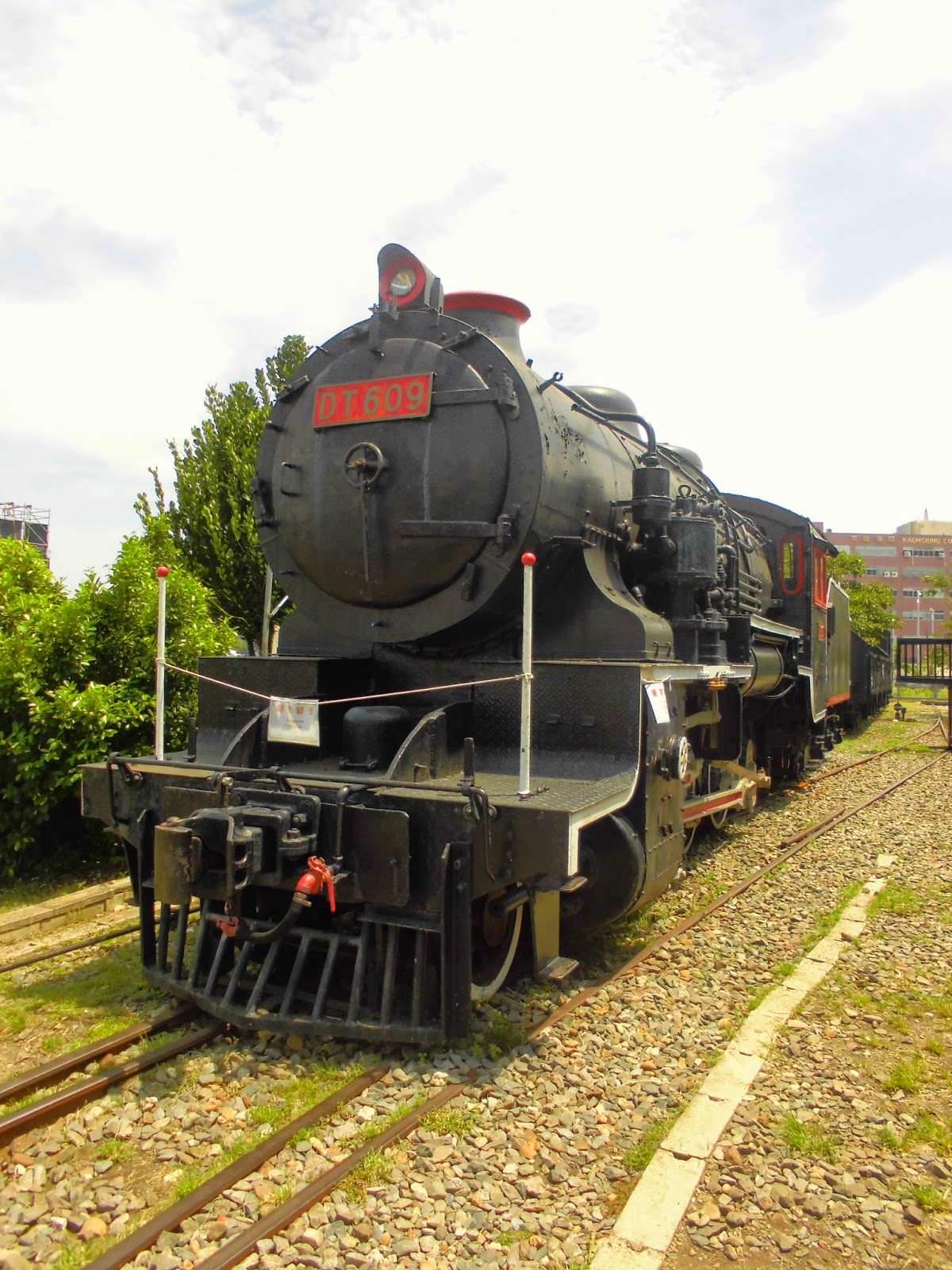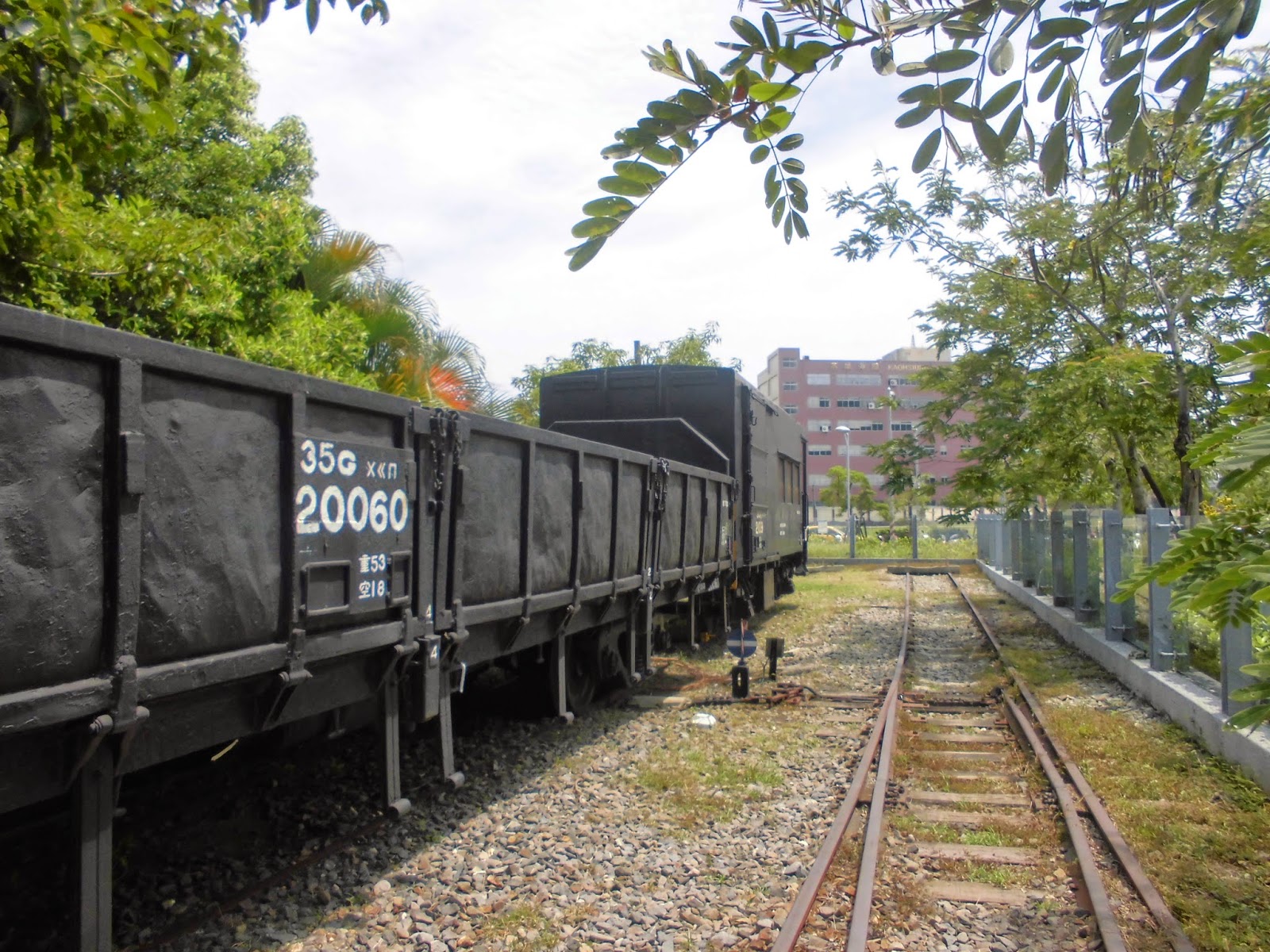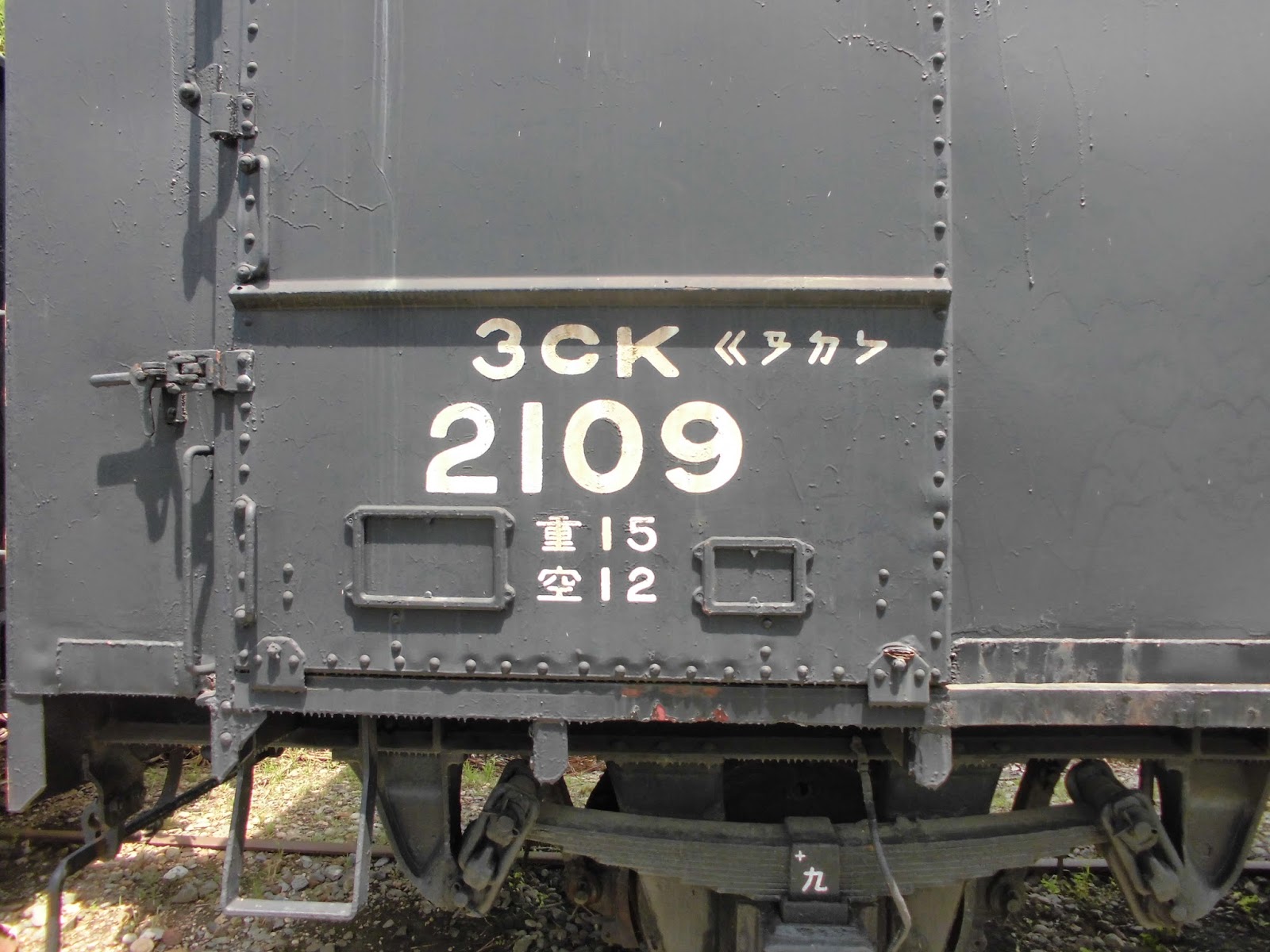Last weekend I went to Kaohsiung and visited the old port area across the water from Cijin Island. I've been here before, but I wanted to visit some places that I hadn't been yet. One place I went to was the Takao Railway Museum in the Kaohsiung Port Station. This station was, I believe, the original Takao (Kaohsiung) station, and when the current Kaohsiung Station was built, it was renamed the Kaohsiung Port Station. It used to play a big role in freight shipping since it connected the Kaohsiung port with the Taiwanese railway system. The station is no longer in use as a station, but it has been transformed into a (free!) museum.
週末高雄に行って、旗津島の向こうの港の方で散策してきた。そこに高雄港駅という駅舎がある。現在は駅として利用されていないが、高雄鉄道故事館(博物館)になっている。元々、この駅は「高雄駅」だったが、現在の高雄駅が出来て、東方にある屏東への鉄道が作られてから、この線は本線じゃなくなって、駅は高雄港駅に名前が変えられた。この駅は南台湾で一番大きな港と鉄道を繫げる、大切な役割を果たしていた。
週末我去高雄的打狗鐵道故事館。以前這座博物館是「高雄站」。後來現在的高雄站是做的,它變成「高雄港站」。現在變成博物館了。
In the first photo we can see the one of the entrances to Siziwan station (part of the Kaohsiung subway system) on the right. To the left is the museum.
上の写真の右側は地下鉄の「西子湾」駅で、左側は博物館だ。因みに、「打狗」は日本時代に入るまで使用された字だ。日本政府は地名が醜いため、「高雄」に替えた。(福建語では「打狗」も「たかお」と発音する。)
上面的照片,右邊是捷運的西子灣站,左邊是故事館。下面,它的正門。
上の写真の右側は地下鉄の「西子湾」駅で、左側は博物館だ。因みに、「打狗」は日本時代に入るまで使用された字だ。日本政府は地名が醜いため、「高雄」に替えた。(福建語では「打狗」も「たかお」と発音する。)
上面的照片,右邊是捷運的西子灣站,左邊是故事館。下面,它的正門。
The building's roof immediately gives it away as a Japanese-era building.
駅舎の屋根を見たら、日本時代の建物だと簡単に判断出来る。
看屋頂就看得出來是日本時代的建築。
駅舎の屋根を見たら、日本時代の建物だと簡単に判断出来る。
看屋頂就看得出來是日本時代的建築。
"Hamasen" means "Beach Line" in Japanese. The railway originally came down to this station and stopped, but after they built the current Kaohsiung station and made the railway extend south and east to Pingtung, the line to this station became a small branch line.
「Hamasen」は「浜線」から来ている。現在の屏東などに行く本線が出来てから、この駅のある支線は「浜線」と呼ばれる様になった。
「Hamasen」是從日文來的。意思是「濱線」。原本,這座車站是幹線最後的。後來政府把往到屏東的鐵路做完了,把這條線當支線,叫做Hamasen。
20th century nostalgia furniture
駅舎の家具は全部一世代前の物だ。
Old time tables
時刻表
A stamp machine, for tickets I guess?
切符に日付を付ける器械だ。
Boxes for sorting things, labeled in Chinese.
何の箱かよく分からない。
More 20th century nostalgia furniture
懐かしい扇風機
Out behind the station is a big open area that has a lot of tracks, and appears to have been a storage yard for trains back in the day. They have a couple trains on display, but must of the former track yard is now a park. There was a concert there on the day I visited.
駅舎の裏には広場があって、昔は機関車をここに停車していた様だ。線路はまだ残っているし、機関車も展示されている。また、広場が公園になっている。
車站後面是廣場,有一些火車。
Japanese-built steam train
日本製の機関車(たしか三菱だったと思う)
日本製造的火車。
The track switches are still in place.
"Safety First"
日本と同じく、台湾の工事現場や鉄道などでもよく見掛ける表現だ。
「ㄍㄢㄉㄣ」是甚麼意思?Gundam?
"No mater what, soldiers riding the freight train is strictly prohibited". Soldiers train-hopping must have been a big problem back in the day in Taiwan. (I guess?)
「どの状況でも関係無く、軍人は貨物車の乗車が厳禁されている」みたいなことが書いてある。
以前這件事算是問題嗎?有很多軍人搭貨車嗎?
There was also a bus on display.
バスも展示されていた。
公車也是展示的。
...a bus that appears to have taken some bullets to the windshield.
銃弾の痕!?!
看起來被射了!到底怎麼了?
Pomegranate
柘榴の実
石榴的果子。
Some flowers
柘榴の花?
An old photo of the harbor area.
拡大された港の写真
Steam trains just had tubes and stuff all over, didn't they?
This open area actually has to be one of the bigger parks in Kaohsiung I figure. It seems to be popular for kite-flying, for obvious reasons.
広場で凧揚げしている人たくさんいた。
有蠻多人把風箏帶來了。
TRAIN ART
If you follow the tracks off in this direction, eventually they merge with the rest of the train system. (Or they did, at any rate. They may be cut off now since this part of the line isn't in use any longer.)
現在は実際に繋がっているかどうか分からないが、線路をこっちの方に沿って行ったら、本線と繋がる。
往前就到達鐵路的主線。
They had an enlarged comic about Kaohsiung history on the side of the museum.
駅舎の隣りに拡大された高雄歴史についての漫画があった。
在故事館外牆有一個漫畫。這個漫畫看起來有趣,但是站著那裡看它太累了!我很可惜念國語還是念得很慢。
The end for now. More next time.
とりあえず終わりにしよう。
下次繼續。


























































